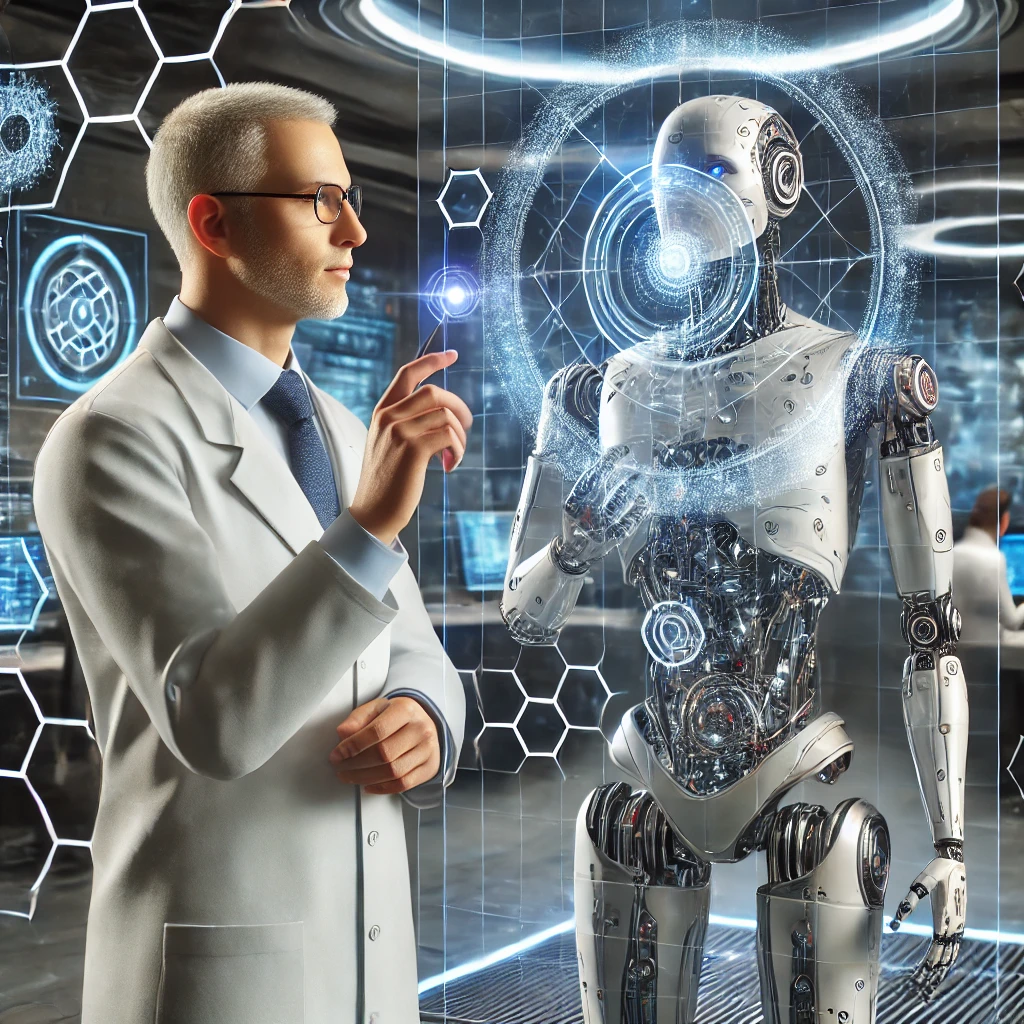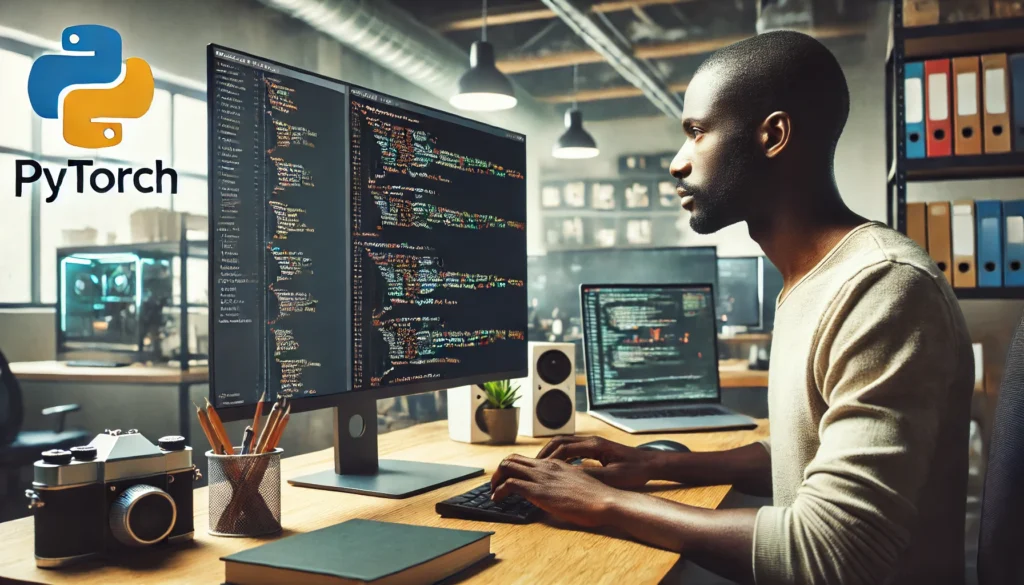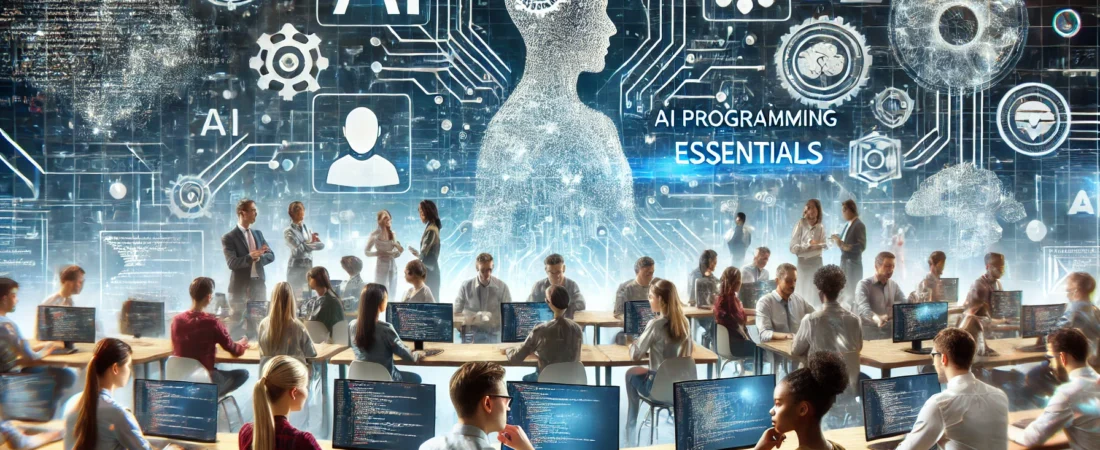
Artificial Intelligence (AI) and machine learning (ML) are transforming how we interact with the world around us. AI involves creating systems that can perform tasks typically requiring human intelligence. These can range from recognizing speech to making decisions based on data.
Machine learning, a subset of AI, focuses on building algorithms that allow computers to learn from and make decisions based on data. Instead of explicitly programming a computer to perform a specific task, ML enables a system to learn from past experiences, or data, and improve over time.
The core of AI and ML revolves around data—processing it, learning from it, and making informed decisions. At its simplest, AI programming can be seen as teaching a computer to “think” and learn from outcomes to better perform a task in the future. This process mimics the way humans learn from experience, making adjustments based on success and failures.
In the next sections, we’ll look at the tools and languages that are central to developing AI applications and how to set up an environment where you can start creating your own AI programs.
Essential Tools and Programming Languages in AI Development
When diving into AI development, choosing the right tools and programming languages is critical for effective learning and application creation. Here, we explore the most popular and widely used resources in the field.
Python: Python is the cornerstone programming language for AI and ML due to its simplicity and readability, coupled with its powerful libraries and frameworks. Python’s syntax is clear, which makes it accessible to beginners. It also supports multiple programming paradigms and is rich in libraries specifically designed for AI and ML, making it a versatile choice for developers.
TensorFlow: Developed by Google, TensorFlow is an open-source library for numerical computation that makes machine learning faster and easier. It is specifically designed to facilitate the development of deep learning models. TensorFlow stands out for its flexible ecosystem of tools, libraries, and community resources that lets researchers push the boundaries of ML, and developers easily build and deploy ML-powered applications.
PyTorch: Originating from Facebook’s AI Research lab, PyTorch is another popular open-source machine learning library. It is particularly favored for its ease of use and flexibility in building and optimizing deep learning models, making it ideal for researchers and developers who require a more intuitive interface for complex applications involving neural networks.

Setting Up Your AI Programming Environment
To get started with AI programming, setting up your environment is a crucial step. This includes installing Python and the necessary libraries. Here’s a quick guide:
- 1. Install Python: Download and install Python from the official Python website. Ensure you choose the version that is compatible with all the libraries you plan to use.
- Set up a Virtual Environment: Using a virtual environment for your AI projects helps manage dependencies and keep your projects organized. Tools like
venvorcondacan help set this up. - Install Libraries: Install TensorFlow and PyTorch via pip or conda. Simple commands like `pip install tensorflow` or `pip install torch` will do the job.
- Integrated Development Environment (IDE): Use an IDE like PyCharm, Jupyter Notebooks, or Visual Studio Code to write your Python code. These IDEs offer great support for Python coding, debugging, and more.
By understanding and utilizing these tools, you’re well-equipped to start your journey in AI programming, experimenting with different models, and exploring the potential of machine learning.
Detailed Setup Guide for TensorFlow and PyTorch
Once you have Python installed, setting up TensorFlow and PyTorch involves a few more steps. Here’s a step-by-step guide to help you install and configure both TensorFlow and PyTorch in your Python environment:

Installing TensorFlow:
1. Virtual Environment: It’s recommended to install TensorFlow within a virtual environment to manage dependencies efficiently.
– Create a new virtual environment: Run in your command line
python -m venv tensorflow_envActivate the environment:
Windows:
.\tensorflow_env\Scripts\activatemacOS/Linux:
source tensorflow_env/bin/activate2. Install TensorFlow:
– With the virtual environment activated, install TensorFlow by running: pip install tensorflow
– This command installs the latest version of TensorFlow along with all the necessary dependencies.
3. Verify Installation:
– To ensure TensorFlow is installed correctly, you can run a simple test:
python
import tensorflow as tf
print(tf.reduce_sum(tf.random.normal([1000, 1000])))
Installing PyTorch:
1. Virtual Environment: Like TensorFlow, using a virtual environment for PyTorch is advisable.
– Create a new virtual environment:
python -m venv pytorch_envActivate the environment:
Windows:
.\pytorch_env\Scripts\activatemacOS/Linux:
source pytorch_env/bin/activate2. Install PyTorch:
– PyTorch installation commands can vary based on your system’s CUDA version (for GPU support). Visit the PyTorch official site (https://pytorch.org/get-started/locally/) to get the appropriate command for your system.
– A typical installation for a system without GPU would be: pip install torch torchvision torchaudio
3. Verify Installation:
– Check your installation with:
python
import torch
x = torch.rand(5, 3)
print(x)These steps should help you successfully set up TensorFlow and PyTorch in your development environment. Both frameworks have extensive documentation and community support, so as you begin to use them, you’ll find plenty of resources to help troubleshoot and expand your knowledge.
Conclusion
Starting with AI programming marks the beginning of a thrilling adventure filled with potential. By grasping the core ideas of AI and machine learning and equipping yourself with essential tools like Python, TensorFlow, and PyTorch, you are setting the stage for crafting intelligent, innovative applications. Whether you’re new to programming or an experienced coder expanding into new areas, AI presents vast opportunities for personal and professional growth. The most important part of progressing in AI programming is to stay engaged and continuously experiment with different projects. Keep your curiosity alive and dive into various challenges. Enjoy your coding journey!
